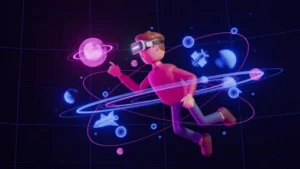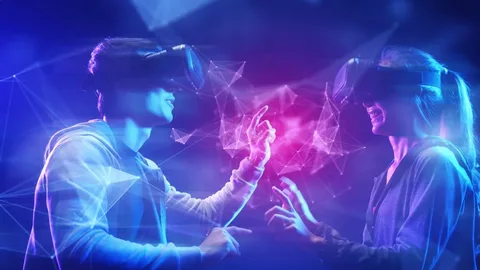A plethora of novels, films, and video games have been set in interconnected networks that depict real-life realities since the advent of the internet. Reintroduced to the forefront of modern technology discourse under the umbrella term “metaverse,” it first gained prominence in the early 1990s. The metaverse is a digital realm where individuals can engage in meaningful interactions, create objects, and engage in truly immersive experiences.
Consider how the Metaverse would change the world and affect NFTs and cryptocurrencies. In this primer, we’ll look at the Metaverse from every angle: its history, characteristics, and social effects. We will explore important facets of this Metaverse From Sci-Fi changing digital world, such as virtual economies and decentralized networks, to thoroughly answer the question, “What is the Metaverse?”
Metaverse From Sci-Fi to Reality
The word Metaverse From Sci-Fi viral in recent years, captivating the interest of both techies and the average person. Originally proposed by science fiction writer Neil Stephenson in his 1992 book “Snow Crash,” the term “Metaverse” has since transcended the realm of pure fiction and become a real-life metaphor for the future.
In modern times, the term “Metaverse” has come to mean a collective online realm that includes all augmented reality, virtual worlds, and the internet. This signifies the merging of virtual and physical worlds, as users are able to engage in real-time interactions with both virtual and physical items. Notable internet organizations have noticed this idea. One of them is Facebook, which rebranded itself Meta in October 2021 to highlight its dedication to creating the Metaverse. Epic Games, Microsoft, and Google are just a few of the industry heavyweights that have shown interest in creating platforms and technologies connected to the Metaverse.
How the Metaverse Works

Now that we’ve covered the groundwork and present state of the Metaverse let’s delve into its inner workings. Augmented and virtual reality (AR) systems, blockchain, AI, and other cutting-edge innovations power the Metaverse. Virtual reality (VR) headsets, other specialized hardware, and standard computers allow users access to the Metaverse.
The Metaverse is a virtual world where users can do a lot of cool stuff, like produce content, trade virtual assets, go to events, and interact with one another and the environment. The underlying architecture depends on decentralised networks to keep the virtual world safe, intact, and everlasting.
Building Blocks of the Metaverse
The first steps in building a metaverse include designing these fully immersive virtual worlds where users can engage in real-time interactions with digital objects and one another. These worlds, both real and magical, are constructed on top of virtual platforms that make use of cutting-edge graphics and rendering technologies. Digital avatars, which users can personalize, act as representations in the Metaverse and allow users to move around in these virtual worlds.
Blockchain technology enables the decentralized aspect of the Metaverse, which is one of its distinguishing qualities. Blockchain technology allows for safe and transparent transactions, ownership records, and digital assets in the Metaverse. Because of this decentralization, users have more freedom, security, and control over their digital assets.
Virtual groups, events, and activities abound in the Metaverse, encouraging people to connect with one another and work together. Within the Metaverse, users are able to cooperate on projects, participate in virtual events, and communicate in real time. The Metaverse also provides chances for the production of virtual goods and services, virtual commerce, and the exchange of digital assets.
Summary
The fact that the Metaverse is fundamentally decentralized means that no one entity can have absolute control over it. By facilitating decentralized peer-to-peer transactions, ownership verification, and Metaverse From Sci-Fi and governance systems, blockchain technology is an important component in the decentralization movement. One popular virtual world application that uses blockchain technology to give people ownership of land is Decentraland.
FAQs
Who coined the term "Metaverse"?
The term "Metaverse" was introduced by author Neil Stephenson in his 1992 sci-fi novel Snow Crash.
How does the Metaverse work?
The Metaverse uses VR headsets, AR devices, and standard computers, powered by decentralized networks, blockchain, and AI to create persistent virtual environments.
Why is blockchain important in the Metaverse?
Blockchain ensures secure, transparent ownership of digital assets, enabling peer-to-peer transactions and decentralization, preventing single-entity control.
Which companies are investing in the Metaverse?
Major players include Meta (Facebook), Microsoft, Epic Games, and Google, all developing platforms and technologies for the Metaverse.





